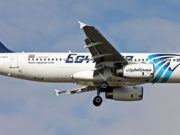The U.S. Federal Aviation Administration (FAA) is encouraging air carriers to review their odor, smoke and/or fumes procedures to ensure that crewmembers appropriately address “benign odor events” and toxic smoke, odor and fumes anomalies to limit exposure of passengers and crew.
In Safety Alert for Operators (SAfO) 18003, issued last week, the FAA said it intended to “identify a need to enhance flight crew procedures that mitigate the risk to passengers and crew.
“In-flight odor, smoke and/or fume events can occur without overt visual and/or olfactory cues. To mitigate adverse health consequences to passengers and crew, prompt and decisive action is critical.”
The SAfO said that air carriers should review their procedures and checklists, paying particular attention to methods of identifying and mitigating odors, smoke and/or fumes in a cabin or on a flight deck.
“While the presence of an odor alone does not necessarily require crew action or medical response, events involving odor, smoke and/or fumes require targeted and timely action to protect aircraft occupants,” the SAfO said.
The document said operators should review International Civil Aviation Organization Document 9481, “Emergency Response Guidance for Aircraft Incidents Involving Dangerous Goods,” which recommends emergency responses for more than 3,500 specific dangerous goods.
Operators also should review their existing policies; collaborate with original equipment manufacturers, other operators and regulators to continuously improve their mitigation procedures; and develop appropriate guidance for crews, the SAfO said.

